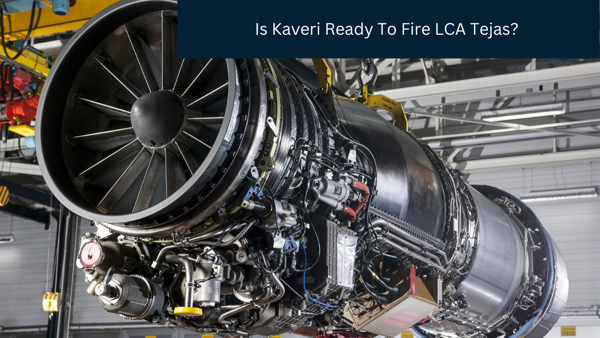
Defence & Security
Success For Kaveri: Is India's Kaveri Engine Ready To Fire LCA Tejas After Successfully Completing High-Altitude Chamber Test?
In the 1950s, India began the process of developing its own fighter jet. Hindustan Aeronautical Limited initially produced only trainer aircraft such as the HAL HT-2, but the organization has always aimed to produce supersonic fighter jets since its inception.
In response to this eagerness, HAL developed its first supersonic fighter, the HAL HF-24 Marut, on June 17, 1967. Only 147 were manufactured by HAL.
Marut was designed to be a capable interceptor aircraft, but it was primarily used for ground attacks. Because the fighter lacked night vision capability, it was only used during daylight operations.
HAL HF-24 Marut saw combat during the Indo-Pakistan war of 1971, Particularly in the battle of Longewala.
The battle of Longewala was crucial for India, and it was fought bravely by the Indian army and air force to deter Pakistan's tank regiment from capturing critical installations in the western sector.
Marut was intended to be a supersonic fighter, but it was only capable of reaching up to 1 Mach and never exceeding it.
This was one of the primary reasons the Indian Air Force began retiring the aircraft after the 1971 war; eventually, the entire Marut squadron was phased out of the Indian Air Force in 1982.
With the retirement of the Marut, the Indian government and HAL began working on another Light Combat Aircraft project in the 1980s.
To develop fully indigenous aircraft, the government directed the Defense Research and Development Organization to work on a Kaveri aircraft engine development program.
The Kaveri engine was supposed to power India's indigenously developed aircraft LCA Tejas, but the dream is still taking shape.
However, Kaveri's successful high-altitude test has demonstrated that India is on the right track to produce an engine to power India's LCA Tejas and other upcoming projects such as Advance Medium Combat Aircraft(AMCA), Omni Role Combat Aircraft(ORCA) for the Airforce, and Twin Engine Deck Based Fighter Jet(TEDBF) for the Navy.
The Gas Turbine Research Establishment (GTRE) in India, established in 1986 as a branch of the state-owned Defense Research and Development Organization, recently completed a high-altitude chamber test of the indigenously built Kaveri engine at the Centre Institution Of Aviation Motors (CIMA) in Russia.
The operation was carried out with the assistance of a Russian modified High altitude test bed plane, the Ilyushin IL-76. The simulation was conducted at an altitude of 13,000 meters (42,651 feet).
There are two phases of this test: Phase 1: this phase is ongoing, and is the technology demonstrator stage and involves modifying and testing existing Kaveri engines to meet design requirements.
To facilitate Phase 2: GTRE has received funding to manufacture five new derivative prototype engines. GTRE has started work with Indian Industry to initiate the production of this engine.
Two Kaveri derivative engines were used as dry Kaveri to demonstrate 75 hours of altitude testing at CIMA, and Godrej has been given the preliminary order of production of engines to produce 6 pre-production engines.
The dry Kaveri engine produced nearly 48.5KN of thrust during the high altitude chamber test, compared to the expected simulated target of 46KN.
This is a significant accomplishment for a country aiming to produce its own jet and export 25 billion dollars of goods by 2025 and 100 billion dollars of goods by 2040.
Gas Turbine Research Establishment(GTRE) hoping to complete all tests by 2024-25 and commence limited series production by 2025-26.
Nonetheless, India must continue to work hard and steadily to develop an engine capable of producing at least 110 to 120 KN. India is also intended to work with foreign engine manufacturers to produce an engine to power India's future jets.

0 Comments